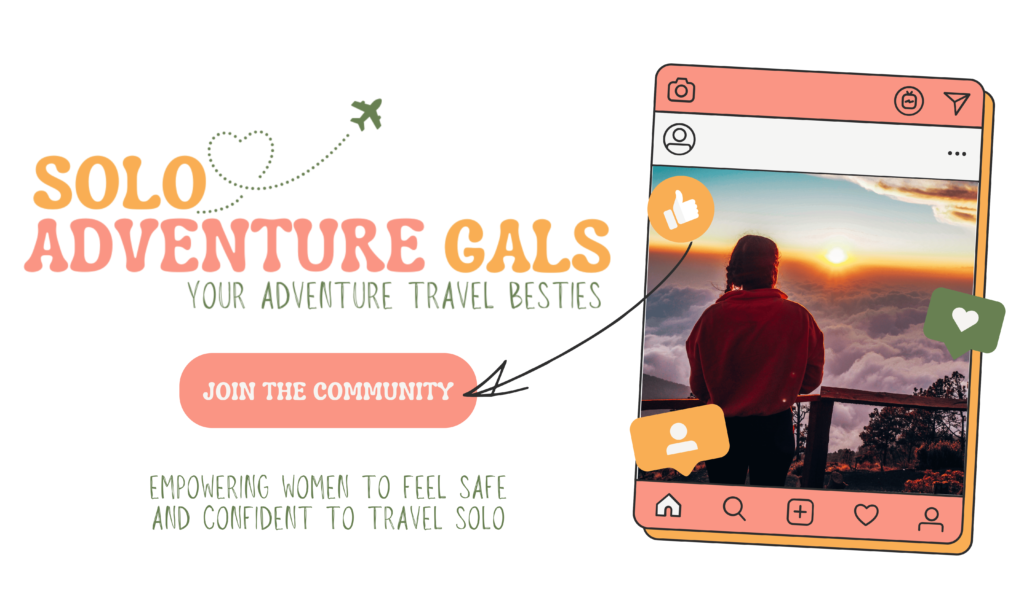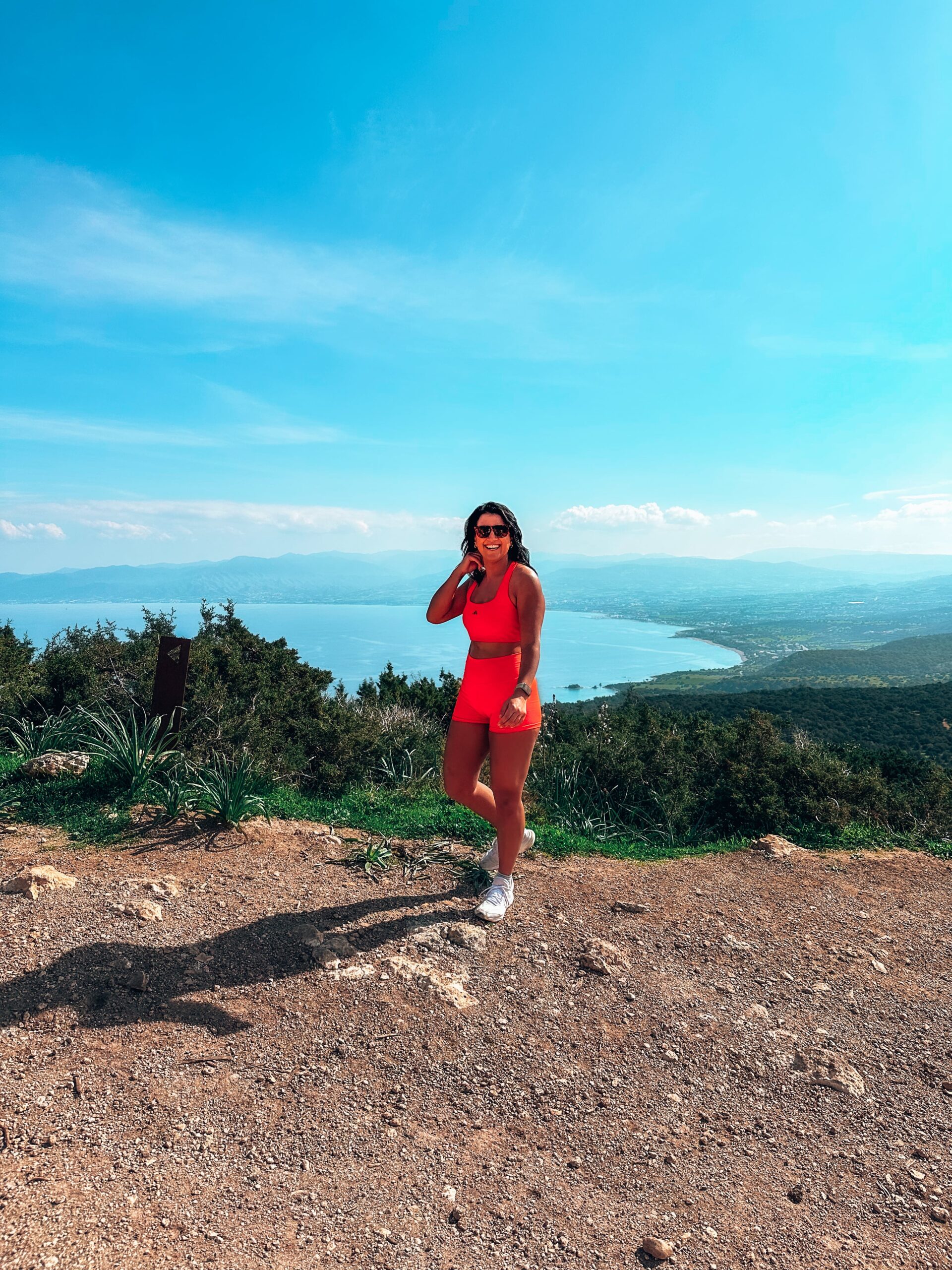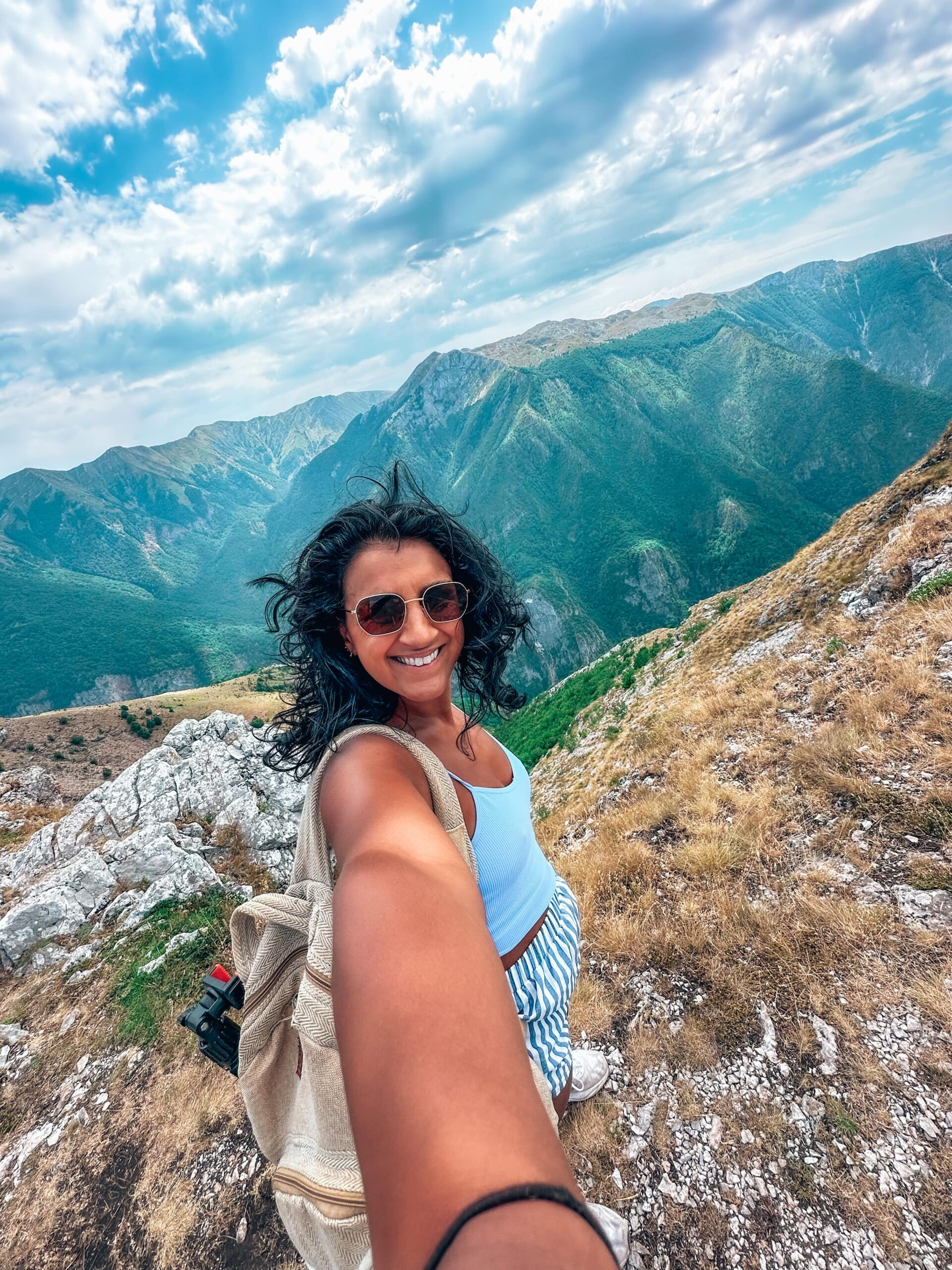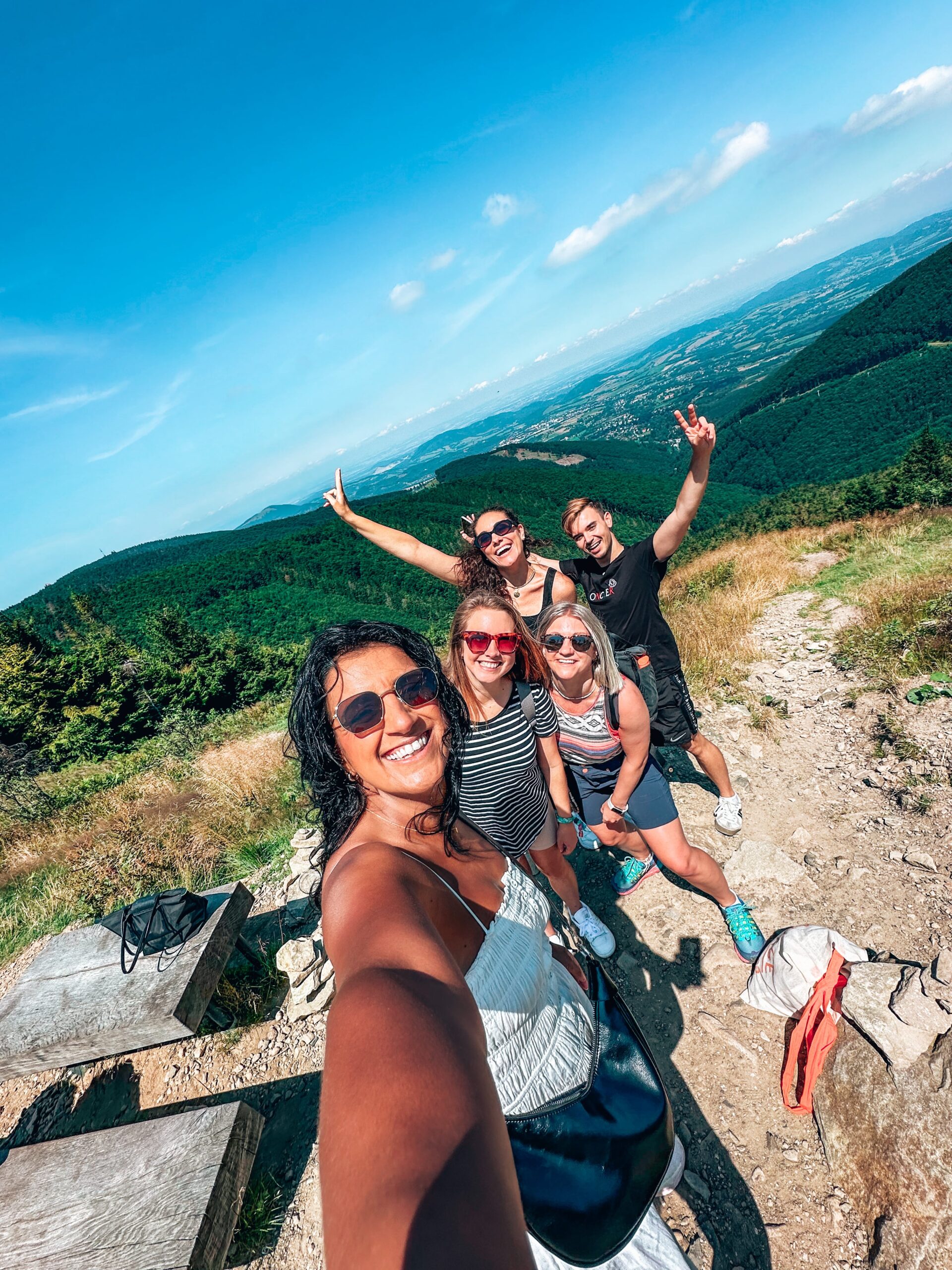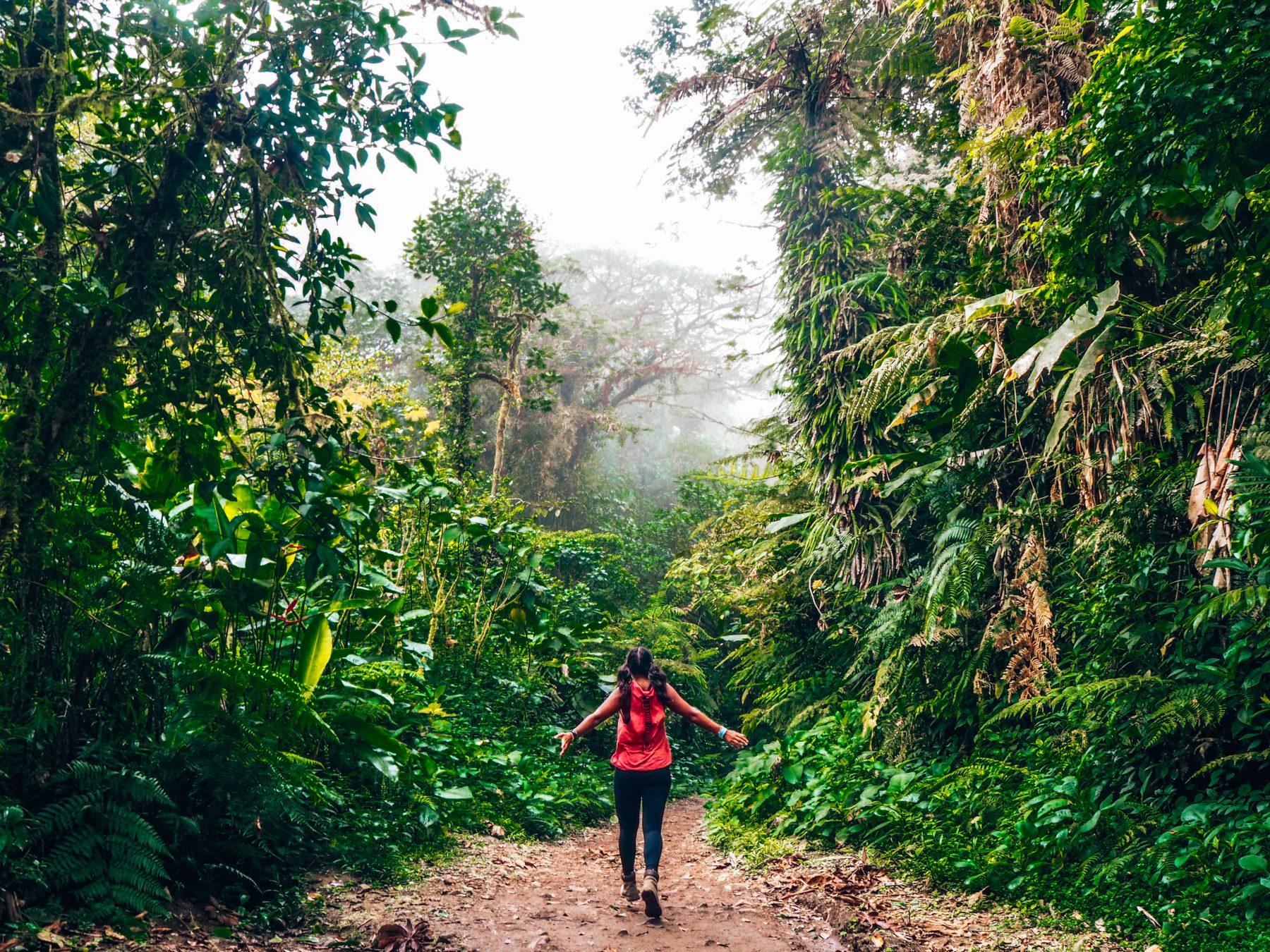- This Acatenango blog post is an AD/GIFTED collaboration with Tropicana Hostel.
The silence of being high above the clouds, interspersed with the crackling of the camp fire. Murmurs of disbelief as the group gazed out upon the endless skies and the setting sun. Suddenly the echoing boom of nearby Fuego, demanding our attention as smoke billowed and red hot lava spewed from the nearby volcano. Nearly 4,000m high, it was difficult to tell whether it was the thinning air, or the view that had left us breathless. Here's why climbing Volcano Acatenango, in Guatemala, was one of my favourite ever travel experiences.
A bit about Volcano Acatenango
One of Guatemala's highest volcanoes – Acatenango stands at 4,000m high and offers epic views of nearby active volcano Fuego, which erupts every 10-15 minutes. For visitors to Antigua, the cobbled streets and beautiful architecture are already a draw. But for adventurous souls, Acatenango has become an experience that can't be missed. Now travellers can join a challenging but incredible hike up the volcano for sunrise, a once-in-a-lifetime experience you won't forget.

Why climb the volcano?
Over the last few years, it's become extremely popular for travellers passing through Antigua to complete the volcano climb. It's the challenge all the backpackers are talking about from the second you enter Mexico and all the way down to Guatemala. But what an epic experience – to climb a volcano and watch another live volcano erupting from camp, before ascending the summit for sunrise. It's a journey that has grown in popularity through word of mouth and now having experienced it, I can understand why. Nothing will ever compare to the experience and nothing I've ever done before even comes close to the Volcano Acatenango climb.
What's it really like to do the overnight climb for sunrise?
I won't lie, it's a hard climb. But nothing worth doing ever came easy in my opinion. It's important to not get swept up in the excitement and the hype, and to actually assess whether you are fit enough to do the climb. As the guides say, anyone can do it, but you need mental willpower to keep you going if you start suffering from the altitude. In the weeks leading up to the climb I was struck down with food poisoning and then a cold.
My normally strong, fit and athletic body was wiped out and although I was pretty much better by the time I did the climb, I could tell I was weaker overall. The climb is uphill, steep in places, includes some boulder scrambling near the top and in places the path is covered in volcanic gravel so the surface shifts and slides beneath you.
AFTER THE CLIMB
We had an amazing group and our guide Johnny, was the most patient and knowledgeable we could have asked for. The first day's hike was hard but he kept us motivated and as a team we made it to base camp. We stopped for a picnic lunch along the way and then spent a breathtaking evening at camp watching the sun set from high above the clouds as nearby Volcano Fuego erupted and spewed lava and smoke from it's depths. The stars exploded across the night sky and huddled around the camp fire with wine and hot chocolate, we were in awe of their beauty. It was truly nature in her element, and the following morning's sunrise was no exception.

OLYMPUS DIGITAL CAMERA
Acatenango Volcano Trek with Tropicana Hostel
How much does it cost?
The Tropicana trip costs $65 USD which covers all your food, the guide, transport and accommodation at the base camp huts with sleeping bags/beds provided.
How long does it take?
The Acatenango trek takes around 6 hours total – we did 4.5 hours the first day, with a 1 hour ascent to the summit the following morning. You can do the trek in one day if you don't have two days to spare or don't fancy the sunrise hike. Or you can also hire a private guide and do the trek overnight from midnight to 6am for sunrise like one guy I met.
However, I would really recommend the two-day trek if you have time. It definitely adds to the experience and takes all time pressure off so you can take as long as you need on the ascent.

Why do the trek with Tropicana?
Before this collaboration was even planned, I knew I was going to do the trek with Tropicana. From as far as Mexico, I was hearing glowing recommendations from those who had already experienced it. And those who hadn't done it with Tropicana were telling me I should make sure to do it with them and not the company they had used. Why does the company come so highly recommended?
Here's 5 top reasons:
- The trip is budget-friendly but with decent meals included, warm clothes/torches available to hire and cosy huts to sleep in at the top.
- You don't have to sleep in a tent – it's VERY cold at the top and sleeping in a hut made such a difference for sheltering from the wind.
- If you're staying at Tropicana, or another nearby hostel, it couldn't be easier! They store your luggage, provide hot showers after the trek & breakfast before you begin!
- My favourite reason, because they use local guides and support the local economy and families for whom the trek is the main source of income.
- And most importantly, because the two day sunrise hike and seeing Fuego erupting red hot lava at night was beyond incredible.

What do I need to know before climbing Volcano Acatenango?
Altitude sickness
The actual hike, I loved – the scenery is incredible and I had a fantastic group. However, I really struggled with the altitude. Myself and another girl who had recently had colds both found the thin air made it feel like someone was pressing on our lungs and we couldn't catch our breath. You never know how altitude will affect your body. I had taken altitude sickness pills beforehand and they definitely helped, but it was still a challenge.
I'm not saying this to scare you – don't let it put you off! Just be prepared and if you've been ill recently, take the time to rest up before the trek. If you're worried about altitude sickness, take the pills.
What to pack?
Out of any, I think this is the most important question to know the answer to before you take the trip. While the climate in Guatemala is pretty hot and tropical in places. When you get to the south, it is much fresher around Antigua and Lake Atitlan – I found myself wearing jeans and a jacket at night. So you want to be prepared for the colder temperatures when you ascend to 4000m. Luckily, I found myself actually very well prepared as I had already packed for all climates before leaving the UK, so I didn't have to borrow many clothes. But be aware that you don't need to take anything with you if you don't want. If you're only planning on this one cold weather activity – you can easily hire all the warm clothes you need with Tropicana.

My clothes packing list:
- T-shirt x2
- Jumper x 2 (one hoody & one fleece)
- Activewear Leggings x1
- Thermal layer – 1x long sleeved top & 1x leggings
- Another thermal top
- Insulated thermal jacket x1 (North Face)
- Socks x1 & thermal socks x1
- Walking boots x1
- Gloves x1, hat x1
- 1x big waterproof jacket to wear on top
Hiring clothes from Tropicana
Out of all of these clothes, I just borrowed the gloves, the big waterproof jacket and a head torch. Everything else was stuff I had already packed. Just to stress – I wore ALL of these clothes to the summit. It was probably the most clothes/layers I have ever worn. I really recommend having lots of thin thermal layers. It makes a big difference and also makes it easier to peel off layers as you start the descent. Also, you can do the hike in trainers and it will be fine. I recommend walking boots, I much prefer them as they protect your ankles and offer sturdier support. But please don't be the idiot who does it in Converse or Vans.
TOP TIP:
Don't wear light colours or white – you'd be amazed how many people I saw rocking up in all white everything. You WILL get filthy. The volcano is covered in gravel, dirt, mud, sand and you will be climbing. I wore pretty much all black and was glad because it meant none of my clothes were ruined.

What do we eat? Snacks? How much water to take?
You are fed well on the Acatenango trip. We had breakfast, lunch and dinner, plus breakfast the next morning and some snacks/extras thrown in. For those wanting to know specifics – there were vegetarian/vegan options available. I was very impressed with the food, I hadn't expected it to be as good as it as.
- Breakfast – pancakes, boiled egg, fruit, coffee
- Lunch – burrito, fruit, cake
- Dinner – rice dish,
- Snacks – pot noodle, hot chocolate, marshmallows by the camp fire, wine
- Breakfast – porridge, banana cake, coffee
Make sure to take enough water
We were also advised to bring a minimum of 4 litres of water – which was the perfect amount. 2l for day 1, then 1 litre for the summit climb. The other litre was for the descent and the previous evening. I finished my last swig of water on the bus back and felt like it was a perfect amount. You don't want to carry the weight of any more. Make sure to take snacks with you, it's good to have a boost while walking. I took the following:
- muesli bars
- apples
- chocolate

How can I book?
If you're interested in booking the trip or learning more about the itinerary, you can find full Acatenango Trek details here on the Tropicana website.
Have you climbed a volcano? Would you do it? Would you like to travel to Guatemala?


